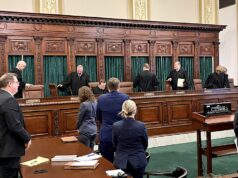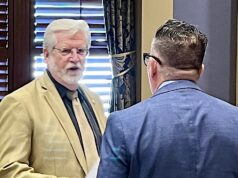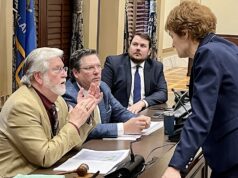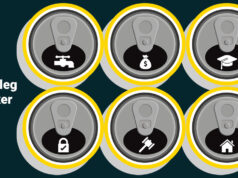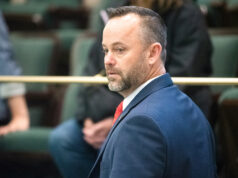On the eve of the Nov. 6 election, the New York Times offered one of the best explanations for Oklahoma’s Republican victories. Campbell Robertson presciently predicted that the governor’s race was, “… essentially a contest over who has the least to do with the current state government, which drew national attention last spring when teachers protested statewide over severely underfunded schools.”
The Times article also detailed a story — alluded to in multiple NonDoc reports and further discussed by Sean Murphy of the Associated Press — that could be as important as the spring teacher walkout. It features Rep. Chris Kannady (R-OKC), who Robertson called a “moderate” Republican and who used dark money to help defeat obstructionist Republicans who fought against the revenue for the teacher pay raise. In the article, Kannady said the Conservative Alliance PAC he supported was necessary to “… cut out the cancer that was attacking us.”
For some reason, The Oklahoman did not report on this huge story, but a subsequent editorial complained that this Republican-versus-Republican battle is “backstabbing and double-talk.” It editorialized that Republicans who the PAC helped oust voted with “… the majority of the GOP caucus on many issues highlighted by the Conservative Alliance PAC.”
According to The Oklahoman, Kannady told the Associated Press that he is involved with the PAC because, “We cannot let members of our own caucus actively be against the rest of us because we disagree on policy decisions.”
But The Oklahoman’s editorial board condemned the Republicans and their dark money providers for a “mass of pretzel logic.” The editorial concludes, “Put simply, Republican lawmakers now must worry about being attacked by other Republicans even when they vote with those Republican lawmakers on most issues. This may promote many things, but caucus ‘unity’ isn’t one of them.”
The Oklahoman is right on two things: First, this internal conflict illustrates the dysfunction of the Legislature in recent years. Second, the so-called Republican moderates have not voted very differently than the extreme right.
OCPAC meeting addresses Kannady’s ‘treason’
To really understand this once-secret conservative civil war, watch the video (above) of Oklahoma Conservative Political Action Committee‘s Nov. 7 meeting, which begins with the typical right-wing complaints: the left wants to end the Electoral College because “they hate this republic”; “Government education is the bane of American civilization”; OCPAC president Bob Lynn refers to the “Jerusalem news media”; MAPS has been a “magnet for liberals” from the east and west coasts; immigrants are good neighbors and workers, but they want a government “for the people,” and that means “socialism.”
Starting about 26 minutes into the video, however, former GOP Rep. Mike Reynolds spoke on “Republican Party treason.” A controversial figure during his time in the Legislature, Reynolds eventually shifted gears to trial lawyers and teachers, the latter of which he said are the former’s “useful idiots.” He claimed Kannady, an attorney, got hundreds of thousands of dollars from the Conservative Alliance PAC to “take over” the Republicans and undo tort reform. Reynolds said that House Majority Floor Leader Jon Echols (R-OKC) said he knew about Kannady’s campaign to defeat conservatives claimed to be alarmed by the assault.
Then, at about the 35- and the 42-minute marks, Reynolds’ theories get weird. The dark money, he claimed, came from George Kaiser. This led to a theory that the funding by anti-conservative billionaires is linked to the legal battle over art stolen by Nazis that the University of Oklahoma agreed to return in 2016. Reynolds further explained that Republican consultants will say and do anything to win. Moreover, because of the incoming inexperienced legislators and governor, essentially 10 people will run the state. If people like Kannady bend Republican governor-elect Kevin Stitt’s ear, Reynolds continued, they will “wipe out Oklahoma.”
What will define the teacher walkout’s legacy?
It has long been argued that the differences between the political parties are smaller than the divisions between Oklahoma’s rural and urban office holders. Moreover, gerrymandering had empowered extremists by creating safe districts. We would be hard pressed, however, to recall a modern time when a small number of such extremists were so influential in pushing a reactionary agenda as bad as the one of the past few years.
It’s possible that the greatest legacy of the teacher walkout will be the way that it isolated the far-right from its majority party. Who knows? Maybe pragmatic Republicans will finally defy their leadership, reject right-wing radicalism and work across the aisle with Democrats.










